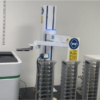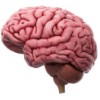Journal of Hematology & Oncology is the official journal of the Chinese American Hematologist and Oncologist Network.
Phase 2 study of canfosfamide in combination with pegylated liposomal doxorubicin in platinum and paclitaxel refractory or resistant epithelial ovarian cancer
Canfosfamide is a novel glutathione analog activated by glutathione S-transferase P1-1. This study evaluated the safety and efficacy of canfosfamide in combination with pegylated liposomal doxorubicin (PLD) in...


